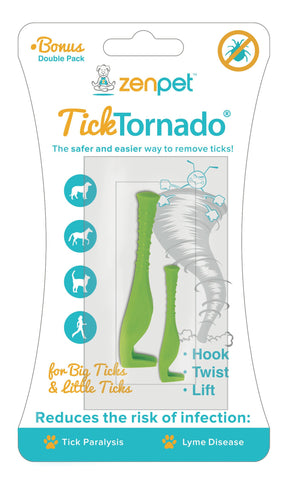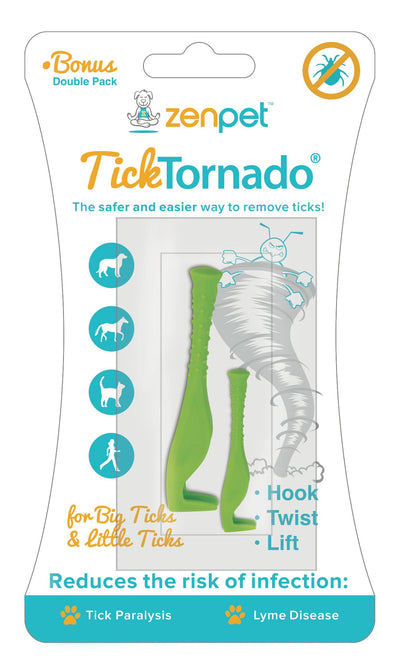It’s summertime! That means the sun is out, and the weather is great and you’ll probably be spending quite a bit of time outdoors with your dog. Summertime also means the return of all sorts of insects after the freeze of winter and the thaw of spring. While there are some dangerous insects out in the world, most bugs you’ll encounter will be harmless to you or your dog. Some, like the European Honeybee are even good for the environment. However, even some of the beneficial insects can be a cause for concern if one isn’t prepared.
Here are some of the more common critters you might encounter with your dog while in the outdoors, and how to handle a bite or a sting from one of them.
MOSQUITOS
Mosquitos are probably the most annoying bug you’ll find outdoors in the summer. Female mosquitoes usually lay their eggs near a stagnant source of freshwater as the eggs need exposure to water in order to hatch.
While you may think that your dog’s coat will protect them from bites, Mosquitos can still attack areas of your dog’s body that have little to no hair like their nose and underbelly. Never use a human bug repellant for your dog. Avoid sprays with DEET altogether as it can be toxic to dogs.
If your dog is suffering from Mosquito bites, no treatment other than an ointment to reduce itching is needed, unless you begin to see more serious symptoms developing. Mosquitos are often carriers for many illnesses and blood-borne diseases that can be serious for your dog. Most common of these is Heartworm which can be treated with over the counter pills which your vet will prescribe, however other more serious illnesses such as West Nile Virus, Eastern Equine Encephalitis, and Canine Lupus can be contracted through a Mosquito bite.
BITING FLIES
Another flying nuisance that can cause a lot of problem for your dog is biting flies. Often referred to as “no-see-ums” these small flies land on your dog and bite them in order to suck their blood. This is a painful process for your dog, and fly bites can also spread infection so it is important to protect your dog from these insects. Typically, biting flies can be found almost anywhere there is a lot of decay. They are also attracted to piles of animal dung so it is important to be aware of their existence when outdoors, especially when in pastures or near livestock. These bites often look like a bulls-eye, and sometimes cause swelling due to the skin irritation.
If your dog happens to be suffering from fly bites, you can utilize an antibiotic cream to prevent a potential infection, and lessen the pain from the bites. You can also apply a thin layer of Vaseline to any area heavily affected to prevent the possibility of future bites in the same area. The Vaseline will act as a barrier between the fly and the dog’s skin.
MITES
If your dog is prone to scarfing down every disgusting delight they encounter while outdoors, you may also run into a problem with mites. Mites, like biting flies are often found around animal dung as well. Mites burrow under the dog’s skin and cause irritation. This creates a skin condition known as Mange which can affect your dog in two ways. The first variety of Mange is known as a Sarcoptic Mange. This will cause redness, and irritation on your dog’s skin, and can lead to permanent damage to their skin and fur from constant scratching. The other type of Mange, Demodectic is a more serious condition that can lead to sore, red areas on the body, hair loss, scaly and crusty skin, and lesions. If left untreated this condition can become more serious.
The good news here is that you can employ a anti-parasitic wash to clear up most mite infestations on your dog.
FLEAS
No list of outdoor creepy crawlies would be complete without a mention of Fleas. Fleas can be found in many places outdoors. They are prone to hiding in areas with tall grasses that are cool and shady. This sort of environment is perfectly suited to all three stages of a Flea’s life cycle. You might also find them at the beach, or other sandy environs. Brush piles, old sheds, mounds of debris, and other dark areas provide an ideal location for Fleas as well..
If you notice your dog doing a lot of scratching after being outside, they might have a Flea problem. You can examine your dog’s groin, underbelly, arm pits, and the base of their tail for evidence of Flea activity. You can also take a look under the tail as Fleas are drawn to that area as well. If your dog does have Fleas you’ll see small red pimple like bumps that are signs of Flea bites. Left untreated, these could become infected and cause even more serious problems.
There is a two step process to clearing up your dog’s flea infestation. First you need to treat your dog. Do this by applying an over the counter Flea medication to kill the Fleas. You’ll want to then wait a week,and use a Flea killing shampoo on your dog’s fur. Once you’ve treated your dog, you next need to treat your home. This is crucial because Flea infestations usually come in waves of three and you want to make sure you’ve eradicated all of the existing Fleas and any eggs they’ve laid in your carpets or floorboards.
To treat your home for Fleas, you need to thoroughly clean and vacuum the entire house. Once you’ve done so, then dispose of the bag in a sealed plastic bag, and throw it away outside. Next wash your pet’s bedding on hot, and if possible dry it on hot as well.
If you’ve done all of this and are still seeing Fleas on your dog and in your house, it may be time to call a professional extermination service.
TICKS
A Tick is a small ectoparasitic organism that lives on the outside of an animal’s body. Ticks can be found in all regions around the world, and all parts of the United States but they tend to be most common in the Northeast. Ticks live in piles of brush, and tall grass and are the most active during the warmer months of the spring and summer, but continue to be active during the fall as well. It is important to check your dog for ticks every time they return from the outdoors, as even a dog who only goes out to use the restroom could get bitten by a tick.
If you check your dog and find a tick, follow these steps to make sure you are able to properly remove the parasite without causing any stress or harm to your animal. Wearing a pair of latex gloves, examine the area. With a pair of very fine point tweezers, grab the tick as close to the dog’s skin as possible. Once you have the tick, gently but firmly pull straight up with steady hands. Avoid a jerking motion, because you don’t want to rupture the tick, or leave the tick’s mouth parts embedded in the skin. Next, clean the area with alcohol to disinfect the wound.
(For more in-depth information on Ticks, please see our blog’s dedicated article on the subject.)
ANTS
Ants can be found seemingly everywhere in the summer, even in your dog’s food bowl! Most varieties you’ll see in the United States are relatively innocuous and you don’t really need to worry about a bite or sting from most species of Ant.
Fire Ants are a more serious problem though, as their bites and stings can potentially be fatal for a dog, due to the Alkaloid venom they release. The venom can cause an allergic reaction in some dogs which can be fatal.
If you think your dog has been bitten by a Fire ant, and seems to be exhibiting signs of Anaphylactic shock due to an allergic reaction contact your personal Veterinarian immediately.
BEES, WASPS & HORNETS
It is worth giving these three types of flying insects their own section.
When playing near flowers, wooded areas or in open meadows always be on the lookout for Honeybees. While a honeybee is mostly harmless and will only attack when they feel threatened or provoked, the sting they can give your dog is not pleasant! If you see a group of bees flying in a straight line, be aware that you may be near a hive and should avoid that area if at all possible. Wasps and Hornets are a slightly different matter. While most wasps are docile creatures, like the honeybee they will sting when threatened. Unlike the Honeybee, which can sting only once before death the wasp can sting repeatedly.
Wasps typically create their nests higher up off of the ground, in trees or under the eaves of buildings. They are commonly found in the hollow metal poles of swingsets and other playground equipment as well. Some solitary breeds of wasps make exception to the rule and and nest by burrowing underground. The Hornet and its relative the Yellowjacket are easily the most aggressive insects in this group, and are usually even more aggressive in the late summer. For this reason it is especially important to be careful when playing, or walking in the woods with your dog. Stay away from rotten logs and old, disused wooden structures as this is where many hornets prefer to nest. Yellowjackets have even been known to use old animal burrows to nest.
If your dog is stung by one of these flying insects you will want to relieve the pain as quickly as possible for them. Do this by making a watered down paste of baking soda and apply it to the affected area on your dog’s body. Ice will also help with the pain. You can apply an ice pack, or even just a towel filled with ice to the area to further soothe your dog. Always keep a close eye on your pet after something like a bee or wasp sting occurs, and consult your personal Vet if the dog’s condition doesn’t improve.
What can you do to protect your pet?
Fear not! Insect Shield is an awesome company that makes insect repellent apparel for dogs. The company offers the option of T-shirts, gaiters, tank tops, and bandanas that are actually coated with skin safe insect repellent. Put the machine-washable garment on your dog, and send them outside to play knowing that they will be kept safe. The repellent is nontoxic so it’s not harmful to dogs, and there is no odor so it doesn’t bother your senses either. The coating on the fabric will also last you up to 30 washes before needing to be replaced.
Insect Shield uses a Permethrin treatment for the clothing that will protect your pup from Ants, Mites, Mosquitos, Ticks, Fleas, Biting Flies! It is worth noting that Permethrin is a synthetic pyrethroid insecticide which resembles naturally-occurring chemicals with insecticidal properties, known as pyrethroids. Pyrethroids have been shown to be harmful for Bees, Wasps, and Hornets though the Insect Shield product website does not list this as the intended target for their apparel.
Most importantly, don’t let this list of critters scare you into staying inside all summer with your dog. Outfit your dog with insect repellent clothing, grab their leash or harness, and go adventure safely now that you have the knowledge and tools to do so!















Leave a comment